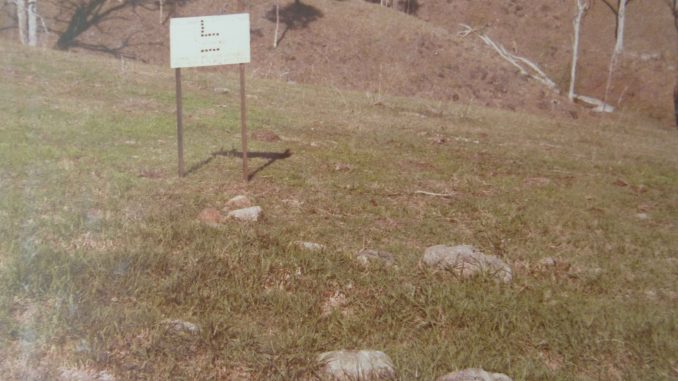
Compiled by Barry Kenny.
“In 1986 the Beaudesert Historical Society erected three monuments to honour and remember the Chinese shepherds who lost their lives doing their work protecting the flocks of sheep belonging to their employers, and the Aboriginals, trying as best they could to drive out the invaders.
These monuments show the areas where the shepherds lived and worked and lost their lives”.
G M Hinton 2006 (from Museum records).
Wordings on the monuments are as follows.
- CHRISTMAS CREEK. “In memory of three Chinese, also Aborigines, who lost their lives during the settlement of this district. Circa 1850”. Erected by the Beaudesert Historical Society 1986.
- KERRY. “Site of Shepherds Hut. Graves of Chinese adjacent. Circa 1850.” Erected by the Beaudesert Historical Society 1986. (Folklore tells us there was never any suggestion that those buried here died from anything other than natural causes and are not those killed at Christmas Creek).
- KERRY CREEK. “In memory of Chinese Shepherds and Aboriginals who lost their lives in this vicinity during the settlement of the district. Circa 1850.” Erected by the Beaudesert Historical Society 1986.
At one of the sites a line of rocks was laid pointing North and West.
Doctor Constance Wong, Curator of the Museum of Chinese Australian History Inc explains.
“The meaning of the stones is self-evident to a Chinese mind. It shows the way from the South (position of Australia) to the West, the extremely happy world in the West after death.”
“The first shepherds were assigned convicts who had no choice and worked for their owners for rations.
“The cessation of transportation of convicts in 1842 was such a blow to the economy that agitation for its reintroduction started but public opinion was against it.”
“In 1843 an association of employers was formed to exploit the labour trade.”
“The Chinese were signed up, at newly opened Treaty Ports in China, by the pastoralist or his delegate, given an advance in wages and shipped to a Port on the east coast of Australia.”
“They were collected by the contractor and taken to the stations concerned and employed as shepherds.”
“A prospective Chinese shepherd could be hired by a pastoralist with the promise of five years employment, two suits of clothing and £6 (pounds) per year.”
“European station hands received £25 to £30, pastoralists paying as much as £150 to European shepherds to go into dangerous areas.”
To be continued.





